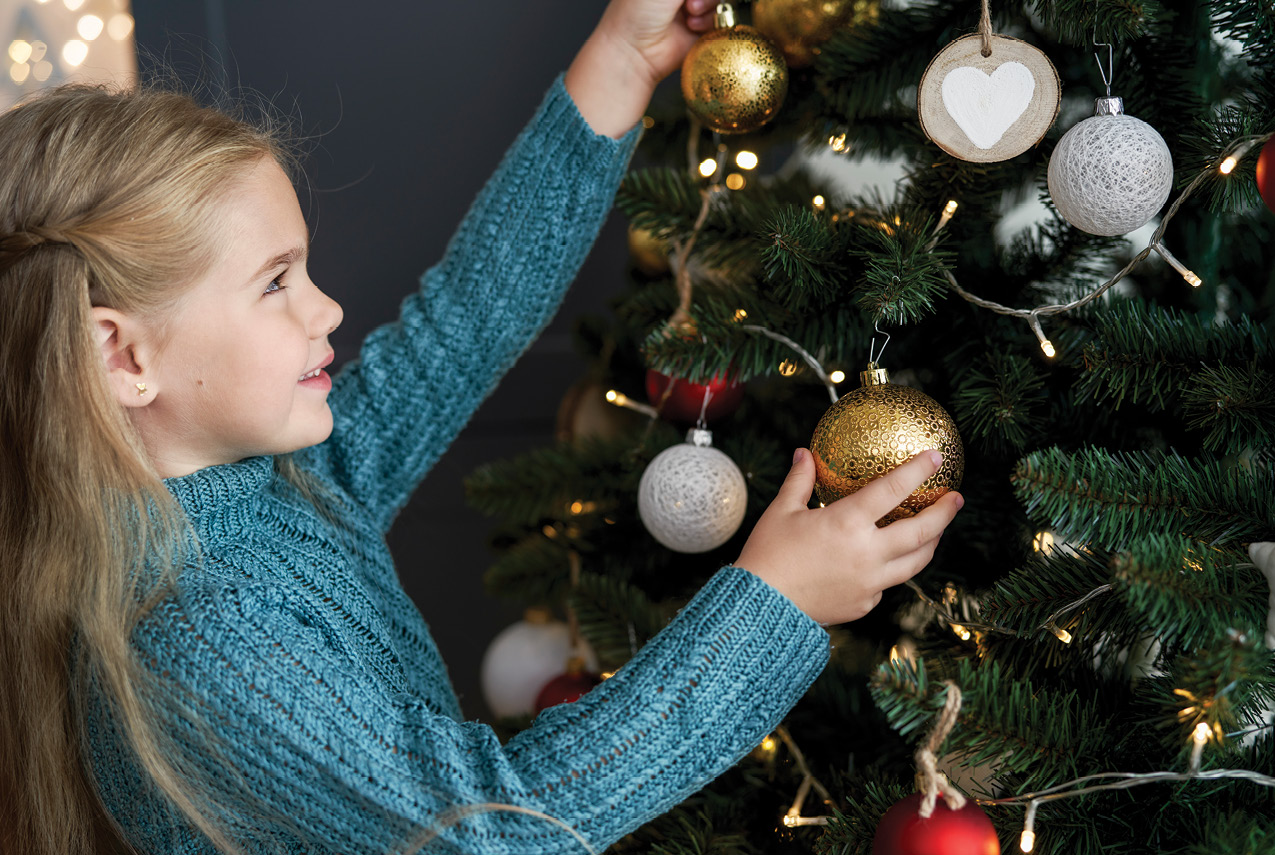Holiday Safety Slip-ups
By Sandra Gordon

Considering how often we find ourselves rushing, taking shortcuts, or checking e-mail instead of keeping an eye on the stove (what’s that smell?), it’s easy to see how at-home accidents can happen. In fact, 21 million Americans seek medical attention due to home injuries each year according to the Centers for Disease Control and Prevention.
Upgrade Your Smoke Alarm
A working smoke alarm is essential for home safety around the holidays and any time of year. It cuts your risk of dying in a home fire by half. If you haven’t replaced yours in the last 10 years, get a new one. The latest models are wireless and interconnected, so when one alarm sounds, they all go off. Choose alarms with the UL label. Put them outside each sleeping area, inside each bedroom, and on each floor.
The holidays can be especially treacherous. According to the Consumer Product Safety Commission, about 12,000 of us are treated in hospital emergency departments nationwide due to holiday-related decorating incidents.
Fortunately, turning your home into a safety zone around the holidays and the rest of the year is just a matter of making a few precautionary tweaks around the house. Here are small risks you may be taking without realizing it that can lead to big problems, and our top tips for avoiding them.
In the Kitchen
Slip-up: Walking away from the stove. Cooking fires are the leading cause of the 386,500 home fires that occur in the U.S. each year. The biggest boo-boo: Putting something on the stove then leaving the room.
“Frying is especially dangerous because a pan fire from oil that ignites can get big fast and catch things around it on fire,” says Meri-K Appy, the president of Safe Kids USA.
Safety fix: Watch your pots. Stay in the kitchen when you’re cooking on the stovetop. And keep burner temperatures low. If you have to exit the kitchen for some reason (the doorbell rings, your child wants you), turn off the burner or take an oven mitt with you as a reminder to return to the kitchen. And no matter what, don’t put the pan on low, then leave to pick up your kids from school or run to the store. Even if you plan to be right back, you just might get distracted and forget about it.
Slip-up: Rushing with food and liquids fresh from the microwave. This move is especially dicey if your microwave is above your head.
When you’re changing levels, going from up to down, hot liquids can more easily slosh onto your face and skin, causing serious burns.
Safety fix: Use gloved oven mitts (not open-face pot holders) with rubber treads so you can get a great grip on whatever you’re carrying.
Also, slow down. “Every time you reach into your microwave to take something hot down, think danger, danger, danger,” Meri-K says. And take a look around to make sure your pets or your kids aren’t underfoot.
Slip-up: Carrying your child with a cup of hot chocolate in tow. Hot liquids and babies and toddlers are never a good mix especially when you consider that younger skin is thinner than an adult’s and more apt to burn. And because kids have less skin surface area, a small scald on an adult can be a serious injury for a child.
Safety fix: Put a lid on it. Don’t carry your child when you’re drinking anything hot. Also, use a travel mug, even at home, so that if your child reaches for the mug or tips it over by say, grabbing the tablecloth to pull herself up, there’s an added layer of protection from dangerous spills.
Slip-up: Using a kitchen chair to reach for something. There are safer ways to retrieve your holiday items than teetering on a chair or the kitchen counter.
Safety fix: Invest in a step stool with a handle, which is built for climbing and balance. To play it safe, hold onto the handle as you reach to pull something from above your head. Don’t use the stool if you feel tired or woozy.
In the Living room and Bedrooms
Slip-up: Neglecting your Christmas tree. Heated rooms can dehydrate a tree quickly. If you run your hand down a branch or two, the needles shouldn’t come off in your hand. By then, it’s too late. Your tree is parched. Dried out Christmas trees are involved in roughly 400 fires each holiday season, causing an average of 17 deaths and $13 million in property damage annually.
Safety fix: Water your tree every day. A well-watered tree can still ignite, but you’ll have more time to get out of your house should a fire start than with a tree that’s not. But even then, it’s not much time. Because homes contain so many highly flammable items (such as upholstery, rugs, curtains and carpet made from synthetic material), "we have just two to three minutes to escape before a flashover occurs – when your home becomes engulfed in flames,” says John Drengenberg, consumer safety director at Underwriters Laboratories. Keep your tree away from vents, radiators, fireplaces and regular candles, too. They pose a fire hazard and cause a tree to dry out faster. And position it away from traffic patterns and doorways so that it does ignite, you can skedaddle out of the house.
Slip-up: Hanging tree decorations too low. Radar: They’re a choking hazard for small children.
Safety fix: Use upper branches. If you’ve got small children who still put everything in their mouths, hang tree trimmings with small, removable, sharp, weighted or breakable parts on high branches, out of their reach. Also, avoid decorations that resemble candy or food. Your kids may be tempted to eat them.
Slip-up: Using regular candles. Sure candlelight casts a warm glow. But consider the downside: Lit candles cause roughly 17,000 home fires each year, according to the National Fire Protection Association. More than half of these fires happened when something combustible came too close to the flame.
Safety fix: Go flameless. Battery-operated flameless candles flicker just like the real thing so you get the ambience affect without the risk. If the power goes out, use flashlights.
Slip-up: Buying holiday toys meant for children older than your child. Although you may think a more “advanced” toy will present a welcome challenge, it’s a choking hazard for kids under 3 if it has small parts. Also, it could be a source of frustration if it’s inappropriate for your child’s stage of development. And think twice before buying a toy with small parts for a child older than 3 who has a younger sibling. The younger child will probably find a way to get the toy.
Safety fix: Buy according to your child’s age. Look for the manufacturer's recommended age range on the toy package--and take it seriously. Age grading can alert you to a possible choking hazard, the presence of small parts, and other dangers. It also relates to a toy’s play value. Keep all small, round or oval objects, including coins, balls, and marbles, away from kids under 3.
Outward Bound
Slip-up: Stringing your home with iffy lights. Repairing indoor or outdoor holiday lights with broken sockets and frayed wires with tape is a quick fix that can pose a fire risk.
Safety fix: Throw away lights with broken or cracked sockets, frayed or bare wires, or loose connections. Use only indoor and outdoor lights with the UL symbol, which signals they’ve been safety tested by nationally-recognized testing laboratory. Outdoor holiday lights are temporary decorations, not lighting fixtures, so don’t use them for longer than 90 days. Don’t use extension cords that feel hot to the touch either. That’s a sign the cord’s insulation has burned away, potentially allowing the inside wires to touch and short circuit.









